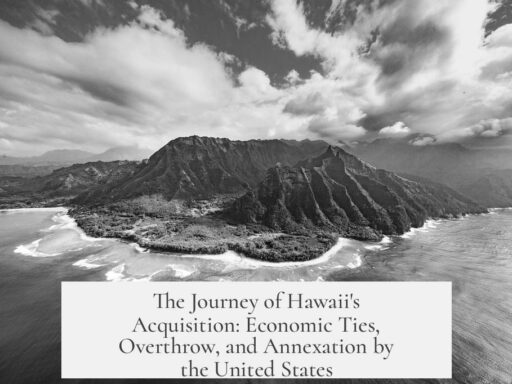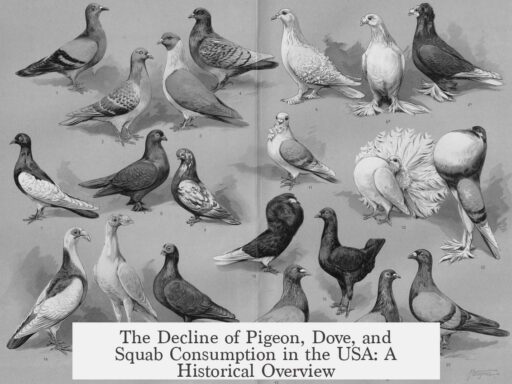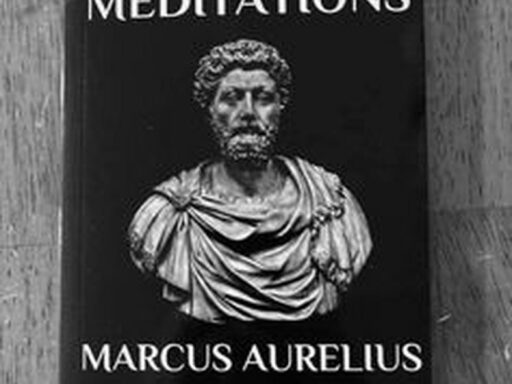The Era of Good Feelings earned its name from a unique convergence of military success, political dominance, and the near disappearance of meaningful opposition that produced a temporary sense of national unity in a young United States.
The Era unfolded soon after the War of 1812, a conflict which, despite ending in a stalemate, featured notable American military victories. Two battles—New Orleans and Plattsburgh—were especially crucial. Victories at these locations strengthened national pride and fostered optimism about America’s potential. Public celebrations focused less on the ambiguous Treaty of Ghent and more on the impressive feats of arms demonstrating the country’s fighting spirit. This surge in patriotism helped unify the populace emotionally and politically.
At the same time, the Federalist Party, the primary political opposition to the ruling Democratic-Republicans, collapsed. The Federalists opposed the war and were seen as lacking patriotism. Their opposition extended beyond political discourse to public rallies and militia resistance, fueling perceptions of disloyalty. The Hartford Convention in 1814, where Federalists discussed drastic measures like northern secession and a separate peace with Britain, further damaged their credibility. These actions alienated many Americans and led to the Federalists’ political downfall.
The failure of the Federalist Party eliminated effective opposition. The Democratic-Republicans, bolstered by the public’s perception of victory in the war and the collapse of their rivals, dominantly controlled national politics. This created, for a brief moment, what seemed to be a unified political landscape. However, this was not true political harmony. It was in many ways a suppression of opposition—the Federalists no longer presented a viable alternative, making competition largely one-sided. Thus, the “unity” was more an artifact of political monopoly than genuine consensus.
| Key Factors | Details |
|---|---|
| Military Victories | American wins at New Orleans and Plattsburgh boosted national morale and pride. |
| Fall of Federalist Party | Opposition’s stance against the war and the Hartford Convention discredited Federalists. |
| Democratic-Republican Ascendancy | Perceived success highlighted Democratic-Republicans as the unchallenged ruling party. |
| Temporary Political Monolith | The absence of opposition created a façade of unity, not true political consensus. |
Before this period, American politics was deeply divided. Initially, two camps debated the Constitution: Federalists, who supported it and sought a strong federal government, and Anti-Federalists, who feared concentrated executive power and favored states’ rights. Over time, these groups morphed into the Federalist and Democratic-Republican parties.
Regional and ideological differences further complicated politics. Federalists concentrated mainly in northern states tied them to abolitionist sentiments. Conversely, Democratic-Republicans dominated the South and generally supported slavery. These divides set the stage for fierce partisan rivalry.
During the War of 1812, this opposition intensified. Federalists not only voted against war funding but also organized public resistance. Their dissent was seen as undermining national unity during wartime, which contributed to their decline in popular support.
The unique political moment created by these forces enabled the country to move with relative solidarity for a short time. The lack of partisan friction allowed leaders to pursue national development goals with less obstruction. Yet, this phase was fleeting. Once new issues emerged—like economic policy, internal improvements, and slavery—political divisions resurfaced more sharply.
This confluence of factors explains why the Era of Good Feelings stands out as an anomaly in U.S. political history. The combination of military success, the collapse of an established opposition, and a dominant one-party system produced an unusually unified national direction. Since then, America has experienced persistent, deep political competition and factionalism, making such a low-conflict phase unlikely to recur.
“So what we got in the Era of Good Feelings wasn’t so much unity as it was a total suppression of the only meaningful opposition, for a time.”
The era illustrates how political unity can sometimes hinge less on shared ideals than on the absence or marginalization of contesting voices. The war’s ambiguous end, regional tensions, and emerging sectional issues ensured that no subsequent period replicated this brief lull in political discord.
- Military victories in 1812 boosted national pride and cohesion.
- The Federalist Party collapsed due to unpopular opposition to the war and perceived disloyalty.
- The Democratic-Republican party became dominant with little organized opposition.
- Political unity was a temporary illusion born from a lack of alternative political voices.
- Deep sectional and ideological divides remained unresolved, returning soon after.
What Exactly Made the Era of Good Feelings So Good?
The Era of Good Feelings wasn’t just about warm feelings and national hugs—it was born out of a combination of military pride, political shifts, and the near-elimination of opposition. This period, roughly from 1815 to the mid-1820s, felt like America was finally marching in unison after weathering the choppy storm of the War of 1812. But what really made this era “good”? How did such a young nation, still shaky from a tough war that ended in a stalemate, find itself largely aligned in one direction? Let’s dive in.
Victory Without a Victorious Treaty: Celebrating the Spirit
First off, the War of 1812 wasn’t a knockout punch for the U.S., but rather a gritty standstill—but Americans didn’t see it that way. The Treaty of Ghent technically ended the war with a draw, which was barely celebrated. What sparked genuine enthusiasm—and feelings of national pride—were the stunning military stands at New Orleans and Plattsburgh. Despite the overall stalemate, these battles were framed in the popular press as epic wins.
Imagine the news headlines of the time: “Yanks Lash Out at the British!” These victories showed that the United States could punch above its weight. The troops’ resilience and victory spirit, especially at New Orleans under Andrew Jackson’s command, was a proud symbolic badge that energized the American public and fed into a growing sense of identity. Victory, even if partial, fueled optimism.
The Federalist Party Disappears—Bye, Felicia!
Now, here’s a juicy political turn. Before this era, the U.S. was a brawling party playground mainly split between Federalists and Democratic-Republicans. Federalists, dominant in the Northeast and seen as the party of banking and commerce, had opposed the war. They even flirted with ideas of northern secession at the infamous Hartford Convention in 1814, which didn’t endear them to the public. Basically, they looked like party poopers during a patriotic celebration.
When the war ended, the opposition—the Federalists—were politically crushed, their reputation tattered as unpatriotic. The party “was absolutely destroyed as a meaningful pole of opposition.” This collapse created a vacuum. Suddenly, there was little organized resistance against the Democratic-Republicans. So, what looked like unity was largely due to one side’s silence.
Democratic-Republicans Riding High on War Vindication
The Democratic-Republicans got quite the political boost out of the war. Their quick rebound and defense of American honor during the conflict gave them fresh legitimacy. The opposition’s defeat made the Democratic-Republicans look like the rightful custodians of American values, undercutting Federalist criticism. People began to rally around them, confusing political dominance for national unity.
But Wait—Was It Really Unity?
It’s tempting to think the Era of Good Feelings was some patriotic kumbaya moment. Yet, historians remind us that what happened was less about everyone happily holding hands and more about the *suppression* of opposition. Federalists were sidelined, marginalized, and politically neutered. This created a one-party dominance without the traditional checks and balances of a competitive system.
In short, “there was no actual unity so much as a temporary political monopoly.” It’s like having a football game where only one team shows up—it’s a win, sure, but not much of a competition. So, the mood was more about political quiet than true harmony.
Before Good Feelings: A Nation Divided
To understand why this political calm was even more striking, consider what came before. The U.S. started deeply divided. The ratification of the Constitution split the political elite into Federalists and Anti-Federalists—disagreements about the power of a central executive ran deep. This division evolved into Federalists, who mostly favored strong central government and commercial interests in the North, and Democratic-Republicans, who championed rural, southern interests and state rights.
Federalists were often abolitionists, especially in the North, while Democratic-Republicans were more likely to be slaveholders. This created clear ideological and geographical rifts within the young nation.
This legacy explains why the Federalists’ opposition to the War of 1812 was so contentious. They actively fought war measures and rallied their base against what they considered an unnecessary conflict. The Hartford Convention was their last, desperate bid to regain influence but backfired spectacularly after American battlefield successes.
Why Have We Never Seen This Again?
Fast forward to today, and American politics looks more like a reality TV show than a peaceful march. So, why hasn’t anything like the Era of Good Feelings happened again?
For one, America’s political landscape has remained robustly pluralistic. Instead of a total collapse of opposition, we see vigorous contestation and multiple parties or factions competing fiercely. The two-party system we have now ensures a perpetual tug-of-war, which is healthy for democracy but quashes any long-lasting “good feelings.”
Plus, the suppression of opposition in the Era of Good Feelings is a fragile kind of peace. The Federalists’ near-demise was an accident of history—a mixture of military pride and political missteps. That’s not a recipe to replicate sustainably. Political diversity and conflict are baked into the American system now. It’s also worth noting that the issues have grown more complex—economically, socially, and geographically—making any one-size-fits-all identity or direction unlikely.
What Can We Learn from the Era of Good Feelings?
There’s still value in understanding this quiet before the storm. The feeling of unity back then was, in many ways, a pause that reflected both triumph and tension. It teaches us the dangers of political monopolies and the importance of maintaining healthy opposition.
It also reminds us that national pride can be a double-edged sword. Celebrating victories is great, but those victories can mask deeper political fault lines. This era was “good” partly because opposition was pushed out, not because all Americans suddenly shared the same vision.
Next time someone says, “Why can’t politics be nice like the good old days?” you can smile and explain that those good old days weren’t really that unified at all. They were a brief lull in an ongoing saga of disagreement and democratic struggle—a reminder that debate and dissent are signs of a living, breathing democracy.
Final Thoughts
The Era of Good Feelings shines as a unique moment in American political history. It arose from military wins that boosted morale, the collapse of a key opposition party, and a triumphant political faction riding the high tide. But its “goodness” depends on perspective—was it unity, or just the silence of opposition? Understanding this helps us appreciate the complicated, often messy, reality behind political calm.
So, the next time you wonder why American politics is so fractious, remember: silence can feel like unity, but it’s rarely the real thing.
What military events boosted the nation’s mood during the Era of Good Feelings?
The United States won key battles at New Orleans and Plattsburgh. These victories were seen as proof of American strength. They increased national pride and optimism after a tough war.
How did the Federalist Party’s collapse impact political unity?
The Federalists opposed the War of 1812 and held the Hartford Convention, discussing secession. This disloyalty discredited them, leading to their collapse. With no strong opposition left, Democratic-Republicans faced little challenge.
Was the Era of Good Feelings true political unity?
No. It appeared united because the Federalist Party was suppressed and politically weakened. The dominant Democratic-Republican Party faced almost no opposition for a time, creating an illusion of consensus.
Why did the country move in one political direction during this time?
Key military victories raised national confidence. The Federalists lost support due to their opposition to the war. This removed major political conflicts, letting one party dominate the landscape.
Why haven’t we seen another Era of Good Feelings in American politics?
Opposition parties have always re-emerged to challenge power. The destruction of one party was unique and tied to war fallout and disloyalty. Political diversity and competition restored afterward.


